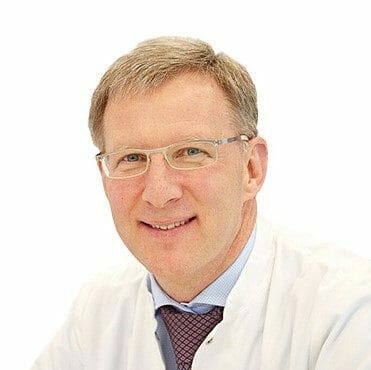About the program
According to the World Health Organization, every sixth inhabitant of the planet suffers from neurological diseases. Older people are more susceptible to this type of disease. Recently, however, such disorders have rapidly rejuvenated and are now increasingly noted among middle-aged people and even among young people. First of all, this is due to the high pace of life and prolonged neuropsychic stress.
But diseases of the nervous system are very insidious. It can be quite difficult to distinguish between a trivial headache, dizziness, insomnia, and rapid fatigue from important symptoms that indicate serious neurological diseases, neglect of which can lead to very serious complications, and in some cases even death.
Modern diagnostics of diseases of the brain, spinal cord, neuromuscular apparatus and autonomic nervous system makes it possible to localize inflammatory and other processes with high accuracy, identify pathology, establish its nature and, therefore, prescribe the correct treatment in a timely manner. The information obtained can be truly invaluable, greatly increasing the chances of timely and successful treatment of the disease.
Program "Neurology"
Introductory conversation with the head of the neurology clinic (history taking, final approval of the examination program and differential diagnosis)
Neurological status
What is this?
This is the result of an examination of the patient by a neurologist.
For what
To assess the state of the cranial nerves, reflexes and sensitivity of various types, coordination of movements, gait.
Psychiatric status
What is this?
The result of a clinical psychiatric examination of the patient.
For what?
To assess the patient's state of consciousness, orientation in space and time, emotional state (mood lability, the presence and severity of depression in the patient), as well as to identify cognitive and mental disorders.
Ultrasound Dopplerography (USDG) of extracranial
neck vessels
What is this?
This is a diagnostic technique that uses ultrasound waves to measure the speed of blood flow in blood vessels (Doppler ultrasound) and to visualize the structure of the walls of blood vessels passing through areas of the neck outside the cranial cavity.
For what?
This test is used to evaluate the condition of the carotid arteries (carotid arteries) and vertebral arteries and can detect stenosis (narrowing) of blood vessels, thrombosis (blood clots), atherosclerosis and other types of pathology, and can also be useful in identifying the risk of stroke and other cardiovascular diseases diseases.
Ultrasound Dopplerography (USDG) of intracranial vessels of the neck
What is this?
This is a diagnostic method that uses ultrasound waves to measure the speed of blood flow in blood vessels (Doppler ultrasound) and to visualize the structure of the walls of blood vessels passing inside the cranial cavity.
For what?
This method allows you to assess blood flow inside the brain and diagnose types of pathology such as the presence of aneurysms, atherosclerotic plaques, stenoses and other vascular abnormalities.
Study of the autonomic nervous system (ANS)
Electroencephalography (EEG)
What is this?
This diagnostic method records electrical potentials generated by the brain and creates an electroencephalogram (EEG), which is a graphical representation of these electrical signals.
For what?
EEG is an important tool for studying brain activity and can be used to diagnose and monitor various neurological conditions such as epilepsy, seizures, headaches, neurological disorders and others.
Analysis of heart rate variability (HRV) at rest
Medical reports of all examinations
Final conversation with the head of the neurology clinic based on the results of examinations, if necessary, the appointment of treatment
Neurology Plus program
The program contains all examinations of the basic package "Neurology". In addition, additionally carried out:
Visual evoked potentials
What is this?
A research method that consists in recording the responses of the visual cortex to stimulation.
For what?
In order to diagnose lesions of the optic nerve (retrobulbar neuritis, ischemic neuropathy), optic tract, diagnosis of multiple sclerosis, glaucoma, degenerative eye diseases.
auditory evoked potentials
What is this?
During this testing, the conduction of impulses along the peripheral and central parts of the auditory analyzer is recorded.
For what?
For the diagnosis of central and peripheral lesions of the acoustic system, cerebellopontine angle, acoustic neuroma, it allows to differentiate conductive and sensorineural hearing loss.
Somatosensory evoked potentials
What is this?
Registration of responses of the spinal cord and brain to electrical stimulation of peripheral nerves.
For what?
To detect demyelinating, degenerative and vascular lesions of the central nervous system, plexopathies and radiculopathies, diabetic polyneuropathy.
Nerve conduction study
What is this?
A method of stimulating motor and sensory nerves with surface electrodes placed on the skin above the nerve under study in order to obtain data on the latent period and the speed of impulse conduction along nerve cells.
For what?
Allows you to determine the state of peripheral nerves, evaluate the functioning and structural integrity of the motor neuron, nerve, neuromuscular junction and muscles.
Study of memory functions
What is this?
System of methods of neuropsychological testing.
For what?
To assess the condition and identify memory defects caused by traumatic brain injuries, strokes and other diseases.
Duration: 1 day














